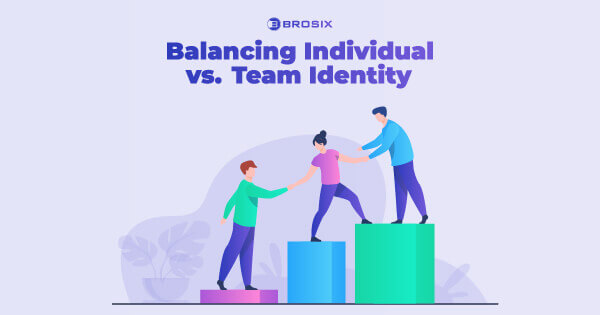Collaboration drives team performance. Teams that work well together are more engaged, perform tasks with higher determination, and achieve higher levels of success. It seems simple enough. Yet good collaboration eludes teams everywhere.
Every business wants to improve how its teams collaborate. But how do you cultivate the communication, creativity, and transfer of knowledge and skills that enables teams to work better together? And what are the challenges? Find out below.
Effective Collaboration in the Workplace
The way of work is evolving. While business meetings, email, and noisy office spaces aren’t yet a thing of the past, more and more businesses are implementing plans that emphasize productivity, efficient workflows, and employee happiness. At the center of this strategy is team collaboration.
Team collaboration is the cooperation of different employees and teams on a common set of objectives.
In the workplace, team collaboration combines aspects of team culture and technology to streamline internal processes, improve the transfer of knowledge and skills, and promote teamwork. In practice, this allows teams to swiftly complete tasks and projects while enabling businesses to deliver products efficiently and achieve success.
Collaboration Techniques to Improve Team Dynamics and Skills
Thankfully, improving collaboration doesn’t require reinventing the wheel. Focusing on these techniques instead promotes teamwork and communication. Master them and everything else sort of falls into place.
Here’s a list of the top 8 techniques to achieve better team collaboration:
- Good communication
- Accountability
- Empathetic listening
- Encouraging creativity
- Recognition of successful teamwork
- Knowledge sharing
- Balancing individual vs. team identity
- Using the right technology
1. Good Communication

Collaboration can’t happen without good communication. Communication should be open and transparent but also focused when it needs to be. That requires more than email and a weekly team meeting.
Provide a variety of channels, like text, voice, and video. That allows team members to communicate in a way that meets individual preferences as well as situational needs.
Robust collaborative tools and administrative control features enable you to define collaboration as you see fit. Using an all-in-one platform like Brosix can help you streamline communication and improve team collaboration and productivity.
2. Accountability
Teams that lack accountability can’t collaborate in a way that improves team performance. Define both team and individual goals, roles, and responsibilities. Then take a group and individual approach to reviewing your accountability measures so that team members understand their roles both in the collaborative environment and individually.
3. Empathetic listening
Collaboration often involves the back-and-forth communication of ideas and information between multiple team members. When a coworker’s talking to you, practice the technique of empathetic listening. Instead of planning your response or interrupting with your own plans, take notes, jot down questions, and keep an open mind. Wait for them to finish before speaking, and then ask questions to validate their ideas.
4. Encouraging Creativity

There’s a reason creativity is one of the most sought-after workplace skills. It’s a crucial element in solving problems, enhancing workflows, innovating, and myriad other work processes that require collaboration. While it may seem that it’s something teams either have or don’t, there are some strategies and techniques to cultivate creativity. By encouraging more flexible work routines, embracing different thinking styles, and not penalizing mistakes, you avoid a leadership style that stifles creativity and collaboration.
5. Recognition of Successful Teamwork
It’s vital to acknowledge effective collaboration. But go further than just rewarding employees verbally. Since each team is different, it’s a good idea to define what collaboration looks like as it pertains to the team’s goals and objectives. Include collaboration in your performance metrics and make it known that collaborative efforts will be evaluated and successful teamwork recognized. Doing so does more than just show the team that you value their effort. It demonstrates the importance of successful teamwork to the business.
6. Knowledge Sharing

If a team isn’t openly sharing knowledge and information, it’s unlikely to collaborate on a productive level.
Establish space for team collaboration, both physical and online. For virtual teams, a dedicated page on the company intranet or a custom chat room could provide a constructive space for remote employees to offer feedback, share ideas, and discuss challenges and successes.
Beyond that, make sure to equip employees with collaborative tools like file transfers and screen sharing.
7. Balancing Individual vs. Team Identity

Teamwork propels performance. But teams are made up of individuals, and collaborative teams succeed when members can harness their unique strengths, like the pieces of a puzzle. Understand that your team consists of diverse skillsets and specific ways of thinking and working. It may take some strategy and planning on your part, such as personality tests and one-on-ones, but by valuing these differences you can exploit them in a way that allows each individual to shine, and the team to flourish.
8. Using the Right Technology
More than half of respondents to a Pew Research study stated that they would prefer to work from home all or most of the time, even when the coronavirus pandemic is over.
As the workplace goes digital, technology is integral to keeping employees in communication and helping teams manage complex tasks, processes, and information.
With tools like instant messaging apps for business, task managers, video conferencing software, and document management and collaboration platforms, you can mix and match technology to create a virtual workspace tailored to your team and your business.
Benefits of Successful Team Collaboration

Promoting the right skills and technology in the workplace doesn’t just elevate team collaboration. It produces a wealth of other tangible advantages, too.
Here are some of the biggest benefits:
Improved Agility
Teams today need to be agile. As the coronavirus pandemic has shown, change can happen at any time. Teams that don’t work well together take longer to react and face more hiccups trying to adjust. While it’s impossible to prepare for every possible situation, collaborative teams understand each other’s roles are in tune with their strengths and weaknesses. This helps them adapt with ease.
Happier Employees
According to a WeWork study of 4,000 professionals across Europe and the U.S., collaboration is the key to employee happiness. More than half of the happy employees collaborated with five or more teammates on a given day, while the happiest ranked the opportunity to work on a collaborative team as the biggest boost to their career.
Enhanced Productivity
The same WeWork study found that satisfied employees in the U.S. are twice as likely as their unsatisfied coworkers to state collaboration as a driver of productivity. What’s more, teams equipped with tools that streamline communication and teamwork, such as Brosix, achieve results more efficiently and with higher quality.
Inherent Upskilling
When a team works in harmony, employees instinctively share knowledge and skills and mentor each other. The benefits are multifold. Employees build trust with their coworkers, diversify their skillset, and gain the confidence to tackle new tasks and projects, improving the team altogether.
Better Bottom Line
The business benefits of collaboration are abundant. At the most basic level, effective teamwork, communication, and knowledge and capability sharing improve not only the management of time and resources, but the quality of the output. Deloitte estimates that businesses with a collaboration strategy are 4 times as likely to realize a growth in profits.
Challenges of Building a Collaborative Team
Teams today face a variety of challenges to successful collaboration. With employees working remotely in large numbers and teams becoming more diverse, collaborating online isn’t quite the same as working together in person.
Ineffective Communication Structure
You can’t improve collaboration without first taking stock of the most important element that determines how a team works together: communication.
Leading by 25%, email is the preferred method of communication by remote employees, but it might be ineffective at conveying complex messages. It also doesn’t allow for real-time communication. And with employees receiving as many as 120 emails per day, important company news and communication can easily get buried.
Team communication tools are much better at facilitating real-time communication and collaboration. With channels like voice and video calling and group chats, you can deliver information fast and keep employees engaged.
The Remote Work Disconnect
The asynchronous nature of remote workflows and schedules means you can’t just pop over to a coworker’s desk to run through a spreadsheet or presentation. Your coworker may be on the other side of the ocean.
Subpar toolkits and technology leave you playing catch up. This disconnect not only stymies team momentum and camaraderie, but also leaves remote workers feeling disengaged. Remote teams face a host of challenges. Without a strategy to combat them, collaboration eludes newly formed remote teams and seasoned work from home veterans.
Cultural Barriers
Cultural differences go beyond ethnicity and place of origin. Different habits, work routines, and approaches to communication and human relationships all impact team collaboration. Even different generations can have more difficulty understanding each other than two people from opposite ends of the earth.
It’s critical to manage these barriers to teamwork. Cultural sensitivity training helps, but it can also be easier than that. Just being aware of differences can help you be more open-minded. Use simple and accurate language. And if you can’t physically get together, remote team-building activities, such as virtual meals or online quiz games, can bridge the gap that’s affecting collaboration.
If Everyone Is Responsible, No One Is Responsible
It sometimes seems logical that the more people involved in a project, the better the result. After all, more voices foster more creative collaboration, right? Not always.
When there are too many stakeholders involved, collaboration can suffer. Opinions and feedback fly from all sides causing a communication overload that pulls team members in different directions. To hone team performance, involve only the relevant stakeholders. If a fresh outlook is necessary, limit it to one or two people.
Team Collaboration Moving Forward
Digital collaboration is the new era in team collaboration and is here to stay. The traditional office space will never be the same, as workplaces will comprise blended teams of in-house and remote workers.
While the right team collaboration tools are critical to survival in this new environment, it’s not as easy as simply rolling out a new platform.
- The difficulties posed by digital collaboration aren’t uniform. Each team is different, so consider the challenges as they relate to your team’s objectives and structure.
- Identify the skills that are suffering as a result of shifting collaboration online. Developing both short and long-term strategies to improve them allows you to set achievable milestones and recognize success more immediately. Don’t be afraid to throw resources at the problem.
- Build a toolkit that reflects your team and solves the collaborative issues they face. Be careful not to overload them with technology. To lighten the load, opt for all-in-one solutions that combine multiple functionalities on a unified platform.
If you’re not sure where to start, give Brosix a look. An all-in-one instant messenger for businesses, Brosix increases teamwork through rich messaging and collaboration features and robust administrative control options. It’s one of the most secure collaboration tools for teams.
Final Thoughts
Applying successful team collaboration techniques is not just a goal—it is a continuous process of adaptation, skill development, and strategic technology integration that leads to sustained success. As we move forward, digital communication is likely to remain a key component of the new way of work. With the right collaboration toolkit and strategies that reflect their objectives, organizations are prepared to enter and embrace a bright digital future.






